The Art of Following Ethical Design Practices
Shining some light on dark patterns…

Being surrounded by digital devices, ads, and information we don’t necessarily need makes it hard to distinguish between what is real and what is controlled by algorithms. We often accept terms and conditions without thinking twice, hoping companies prioritize user experience and ethical practices. However, the harsh truth is that that’s not always the case.
As designers, we are on the other side of this. We learn to use design patterns without questioning whether this is right or wrong. We think and listen to what our client or business wants but don’t always think enough about our end-user on the other side of every product we build.

When I started designing products, I learned more about ethical design practices with the help of my mentors and YouTube videos. It was a muscle exercise to internalize - what the end-user needs vs. what the business gains. It’s important to note that with so many people interacting with digital products daily, the potential for manipulative interfaces increases. This is where ethical design practices become crucial.
Uncovering Dark Patterns in Indian Apps 🎯
Around two months back, I had the opportunity to work on a project that focused on uncovering “dark patterns” in popular Indian apps—the project aimed to curate a holistic Dark Pattern taxonomy and a repository for ethical design practices. We didn't pre-judge what constituted a dark pattern but developed a neutral methodology to identify them across 53 widely used applications. Through this research, we documented various manipulative design practices employed by these apps.
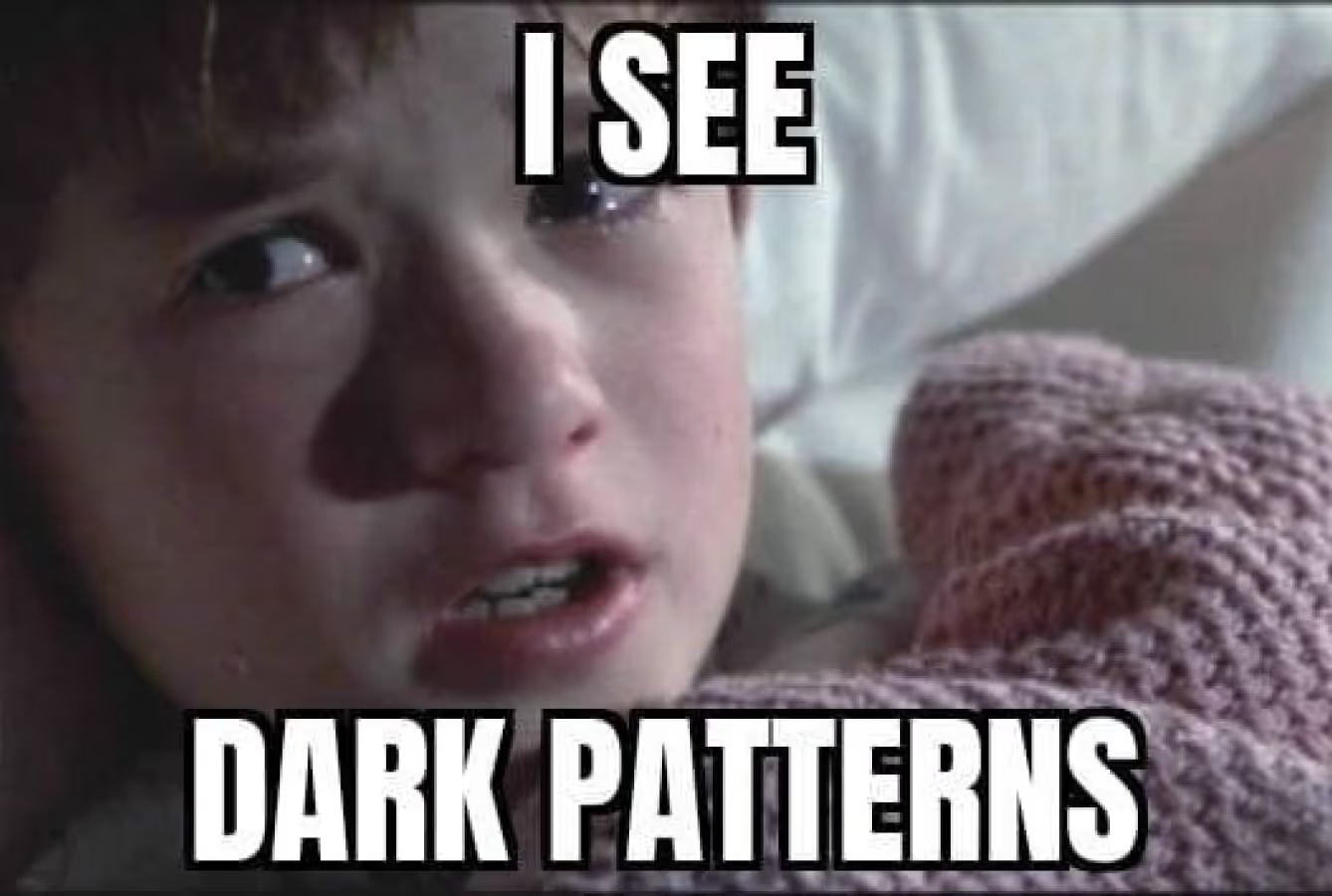
While performing the research, we encountered the three most common dark patterns -
Privacy Deception
This refers to a dark pattern that manipulates users into unknowingly sharing more personal data than intended, either through obscured opt-out practices or by making it difficult to manage default settings prioritizing maximum data collection. For example, some apps pre-select permissions for various types of notifications, including promotional offers, memberships, and feedback, without seeking explicit user consent.
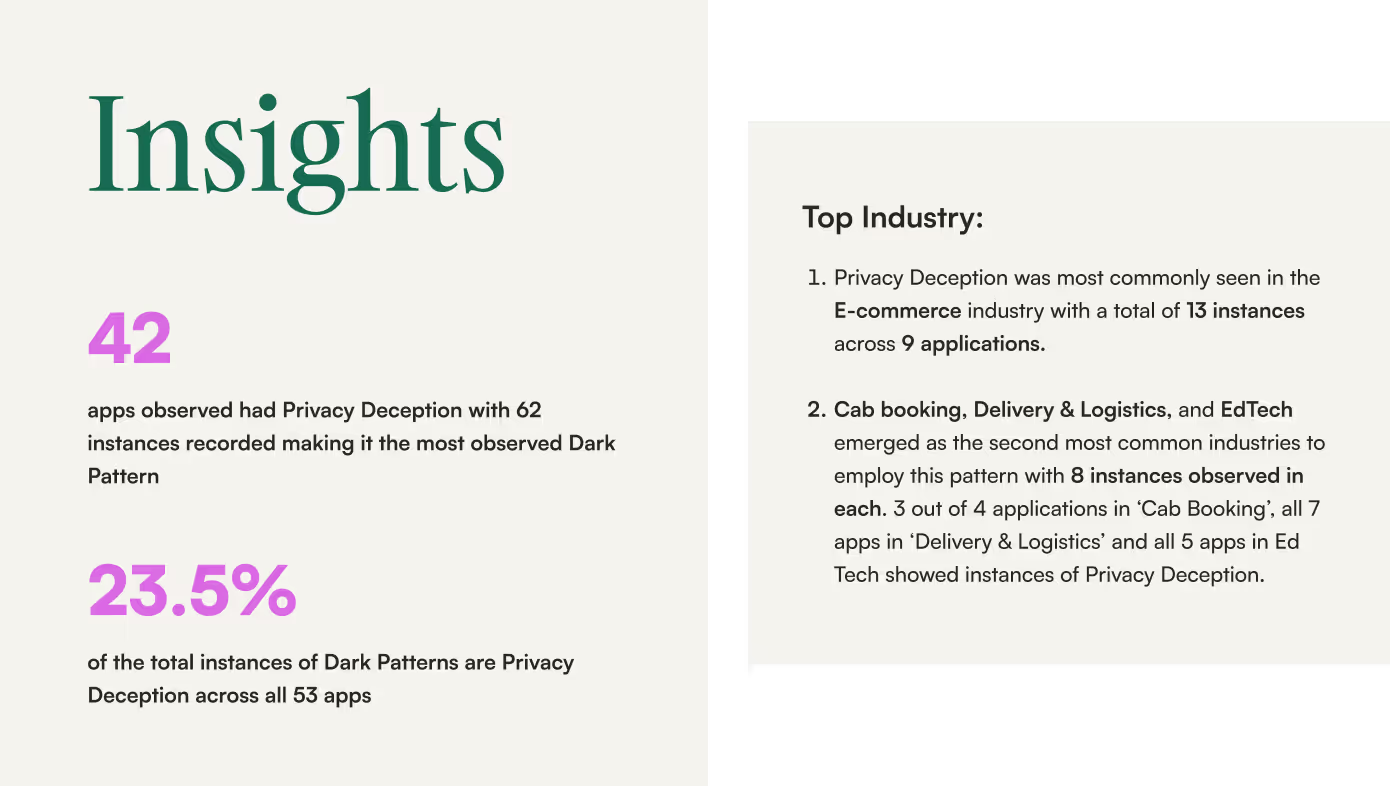
Interface Interference
This refers to a dark pattern that manipulates the user interface to highlight certain specific information and obscure relevant information relative to the other information to misdirect a user from acting as desired. For example, multiple apps advertise discounted product prices without fully disclosing the conditions required to access those reduced prices.
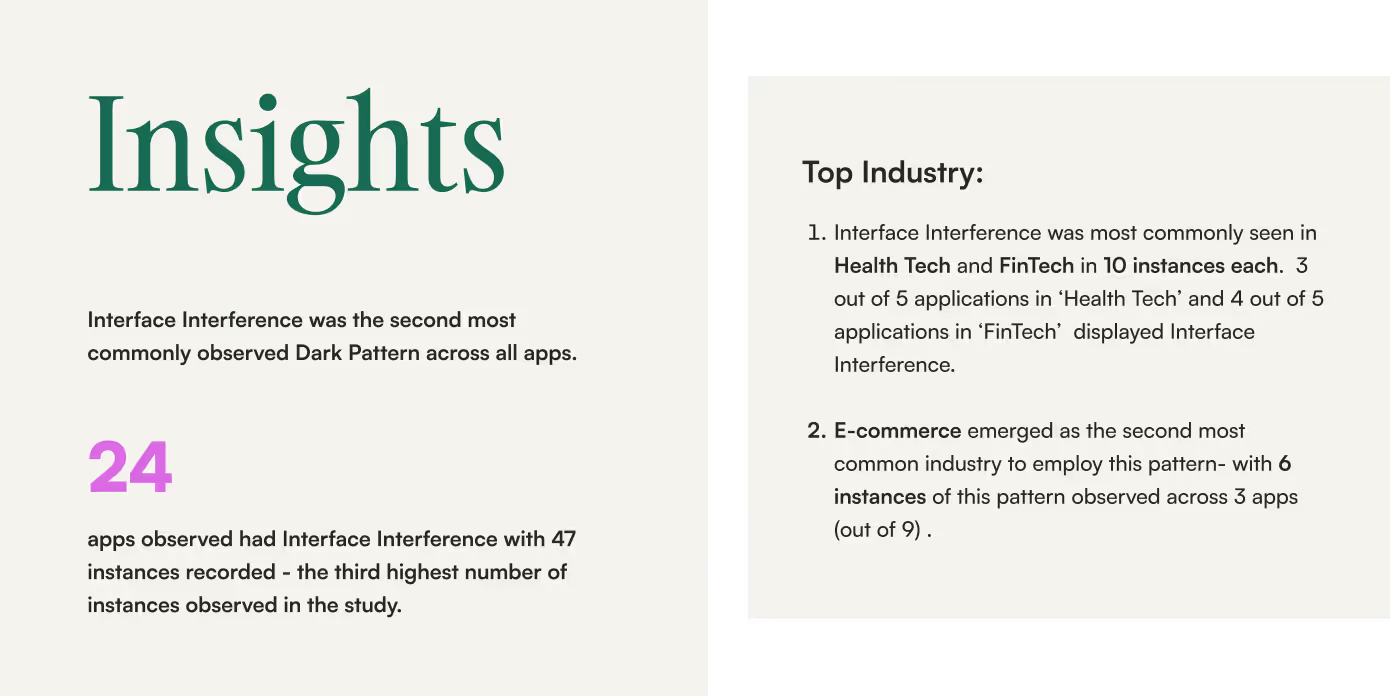
Drip Pricing
This is a dark pattern that uses a confusing pricing technique. Firms advertise only part of a product's price and reveal other charges later as the customer goes through the buying process. For example, big e-commerce giants show total cost as lower after the discount, while a platform fee is added after adding the item to the cart.
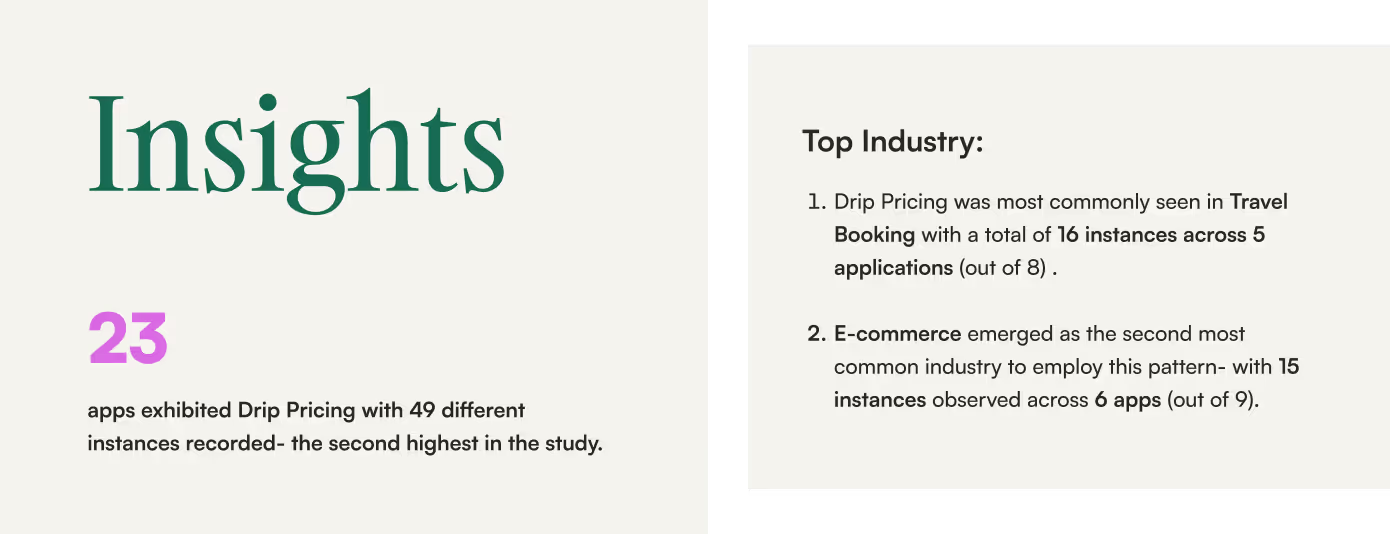
From Awareness to Action ⚡
Before this project, I certainly understood the concept, but through the meticulous process of scrutinizing 53 popular apps, my ability to identify them has become significantly sharper. This newfound vigilance allows me to approach my design work more critically, ensuring that user needs are prioritized and ethically sound design choices are made.
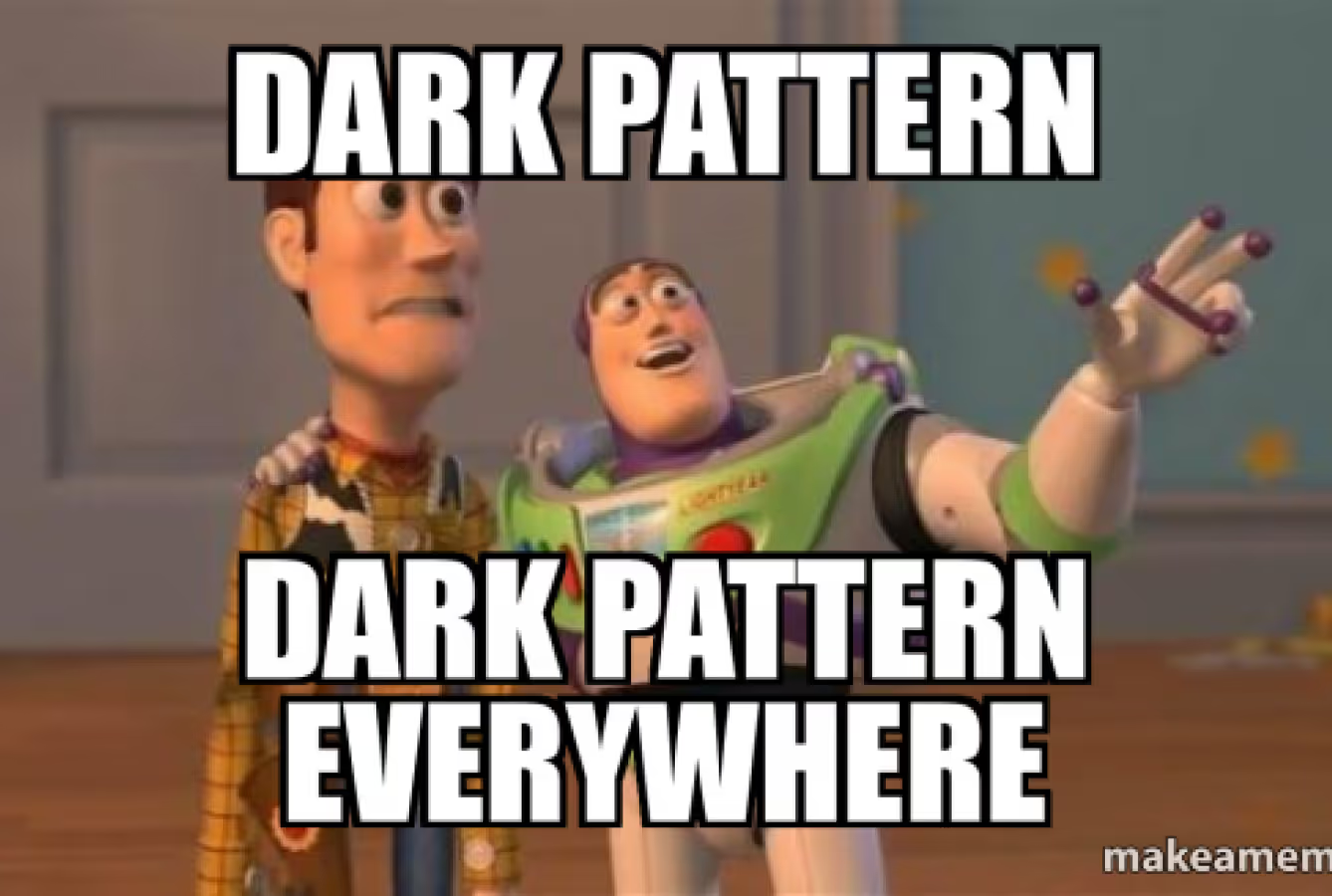
This project also shed light on the broader impact of dark patterns on consumers. By employing deceptive tactics that exploit user anxieties or make data control difficult, these patterns can erode trust and ultimately lead to customer churn. For example - Mark Zuckerberg's widely publicized data privacy scandals, also known as Privacy Zuckering, often attributed to manipulative design choices, resulted in a significant loss of user trust and a decline in Facebook's user base.
Doing Design Right 💡
While there were numerous eye-opening examples of dark patterns, there were also some leading brands following ethical design practices -
Airbnb
A pattern was found across a majority of apps: creating a sense of false urgency to trick users into making rushed decisions. Airbnb takes the right approach by labeling certain properties as “Rare finds,” which indicates their high demand. This transparency allows users to make informed decisions based on accurate information, not manufactured urgency.

Nike & Adidas
Nike and Adidas demonstrate ethical design practices by asking users for permission during onboarding to receive different types of notifications. They clearly explain what each notification entails and allow users to choose only the ones they find valuable. This approach fosters trust and respects user preferences.

Starbucks
Targeted advertising can be helpful, but it can also feel intrusive. Starbucks understands this and provides users with the option to opt in or out of receiving personalized ads and promotional offers. This empowers users to control their data and tailor their experience to their preferences.
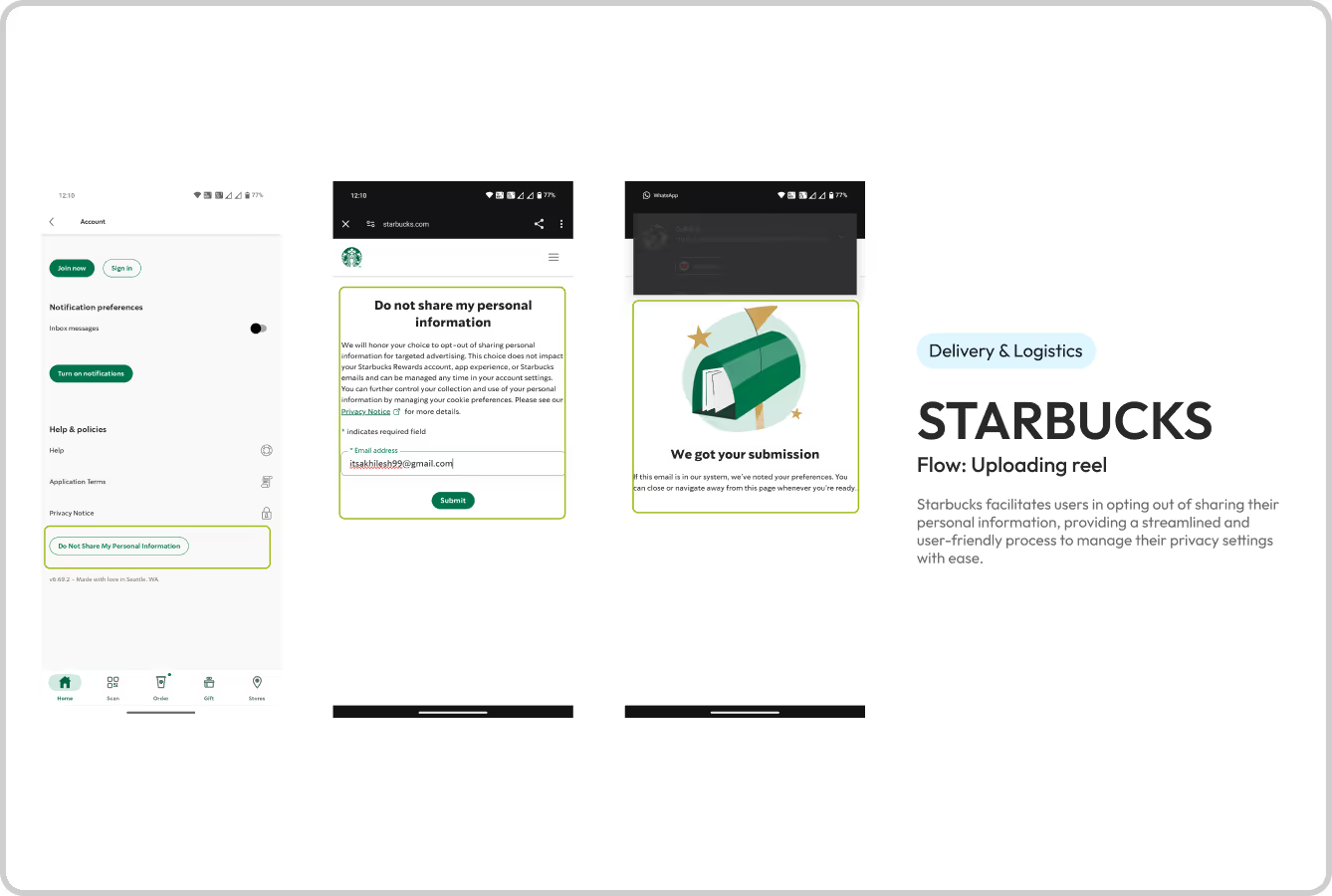
A Fresh Design Perspective 🌟

This research project on dark patterns has yielded valuable insights that extend beyond identifying manipulative design practices. Here are some key takeaways that resonated with me:
Designing with Empathy
When our design philosophy is rooted in empathy and if we have it in our heart that we want to give a pleasant experience to our users, automatically, our designs are going to be ethical. Focusing on user needs over personal gain or profit margins allows us to create functional and user-centric designs.
Accessibility for All
The success stories of ethical design practices implemented by leading companies demonstrate that anyone can follow these practices. By prioritizing user well-being and transparency, we can build trust and loyalty regardless of company size or resources.

I’ve realized that ethical design practices are not just a trend—it’s a commitment to creating better digital experiences. Thanks to my deep dive into the world of dark patterns, I know that by prioritizing ethical design practices, we build trust and create products that truly resonate with users.






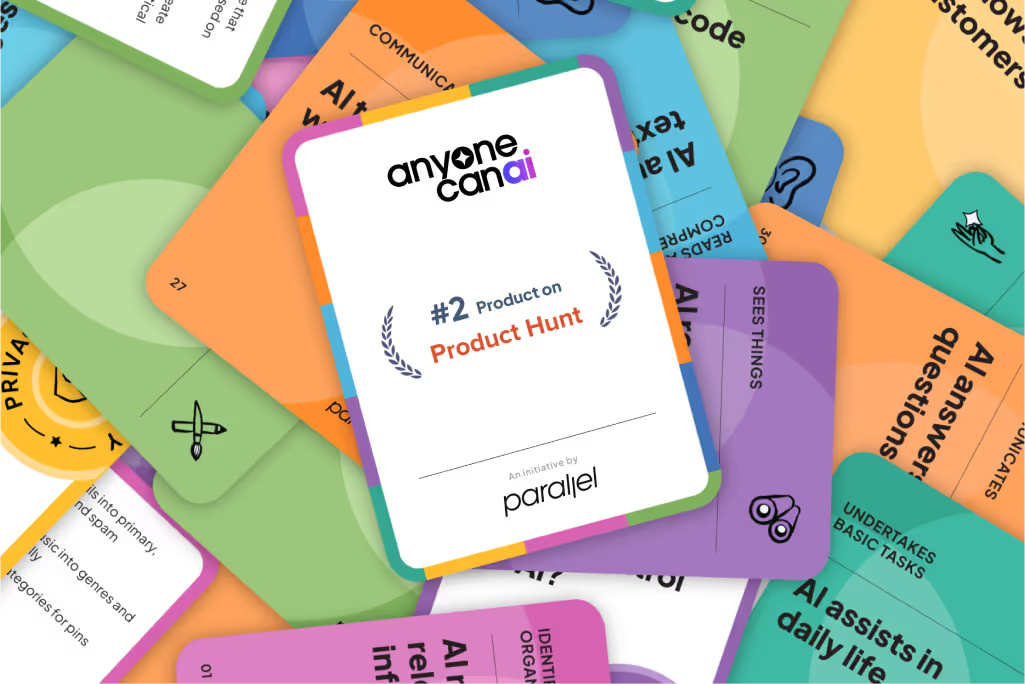


.avif)


